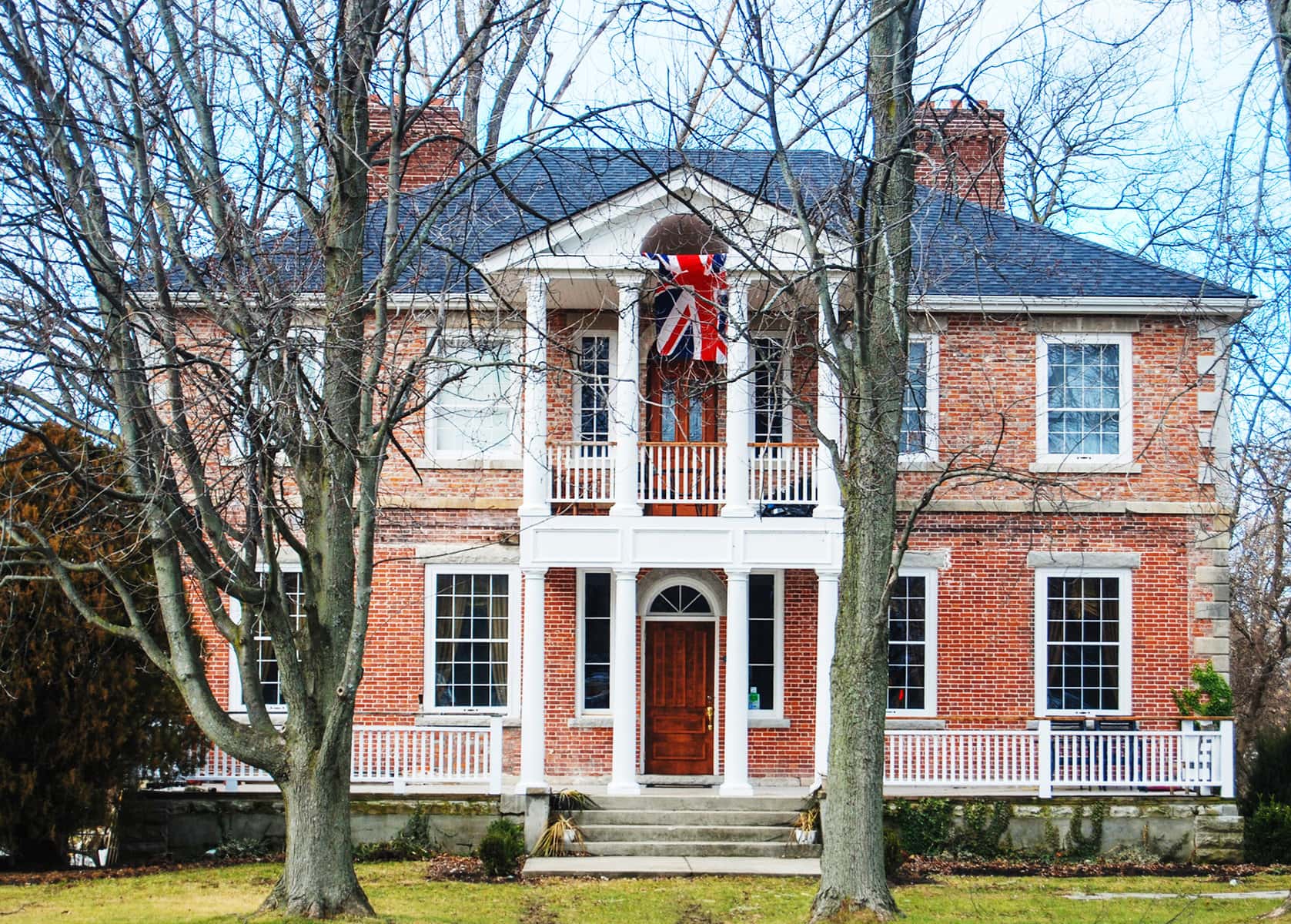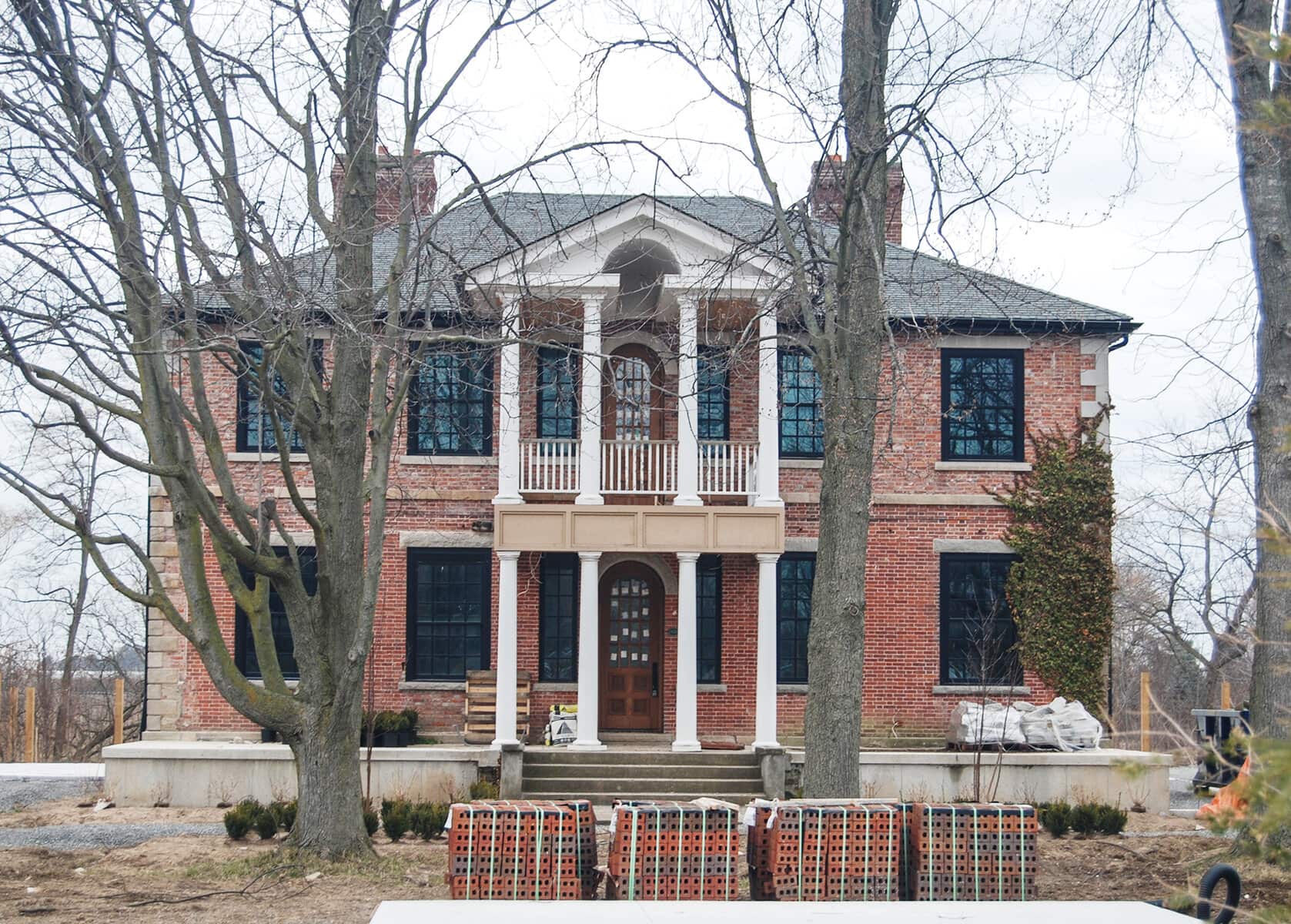There is no doubt that I am obsessive-compulsive. In the past, when engaged in a particular project or research, it was not uncommon for me to sit down in my office and engage in 48-hour (or longer) work marathons.
My long-suffering partner has often stated that anything outside my current focus simply ceases to register in my conscious mind, that we could experience an earthquake and I would not notice.
And, she’s not exaggerating.
However, in recent weeks I have been involved with a terrific group of Niagara-on-the-Lake volunteers who are helping to compile a complete catalogue of our town’s surviving 19th- and early 20th-century houses and two photos taken of important historic buildings brought them sharply back into my focus.
The sad thing is, each of these houses has been written about in past Arch-i-text columns.
Locust Grove on Hunter Road was one of the earliest manor houses constructed in this town and it has had a tumultuous history.
Erected circa 1782, it was burned during the War of 1812 and rebuilt on the original foundation in 1820. Two additional fires, one in 1904 and a second in 1934, consumed the second floor.
Its owners (due, I suspect, to financial constraints) elected not to fully restore the upper level but instead abbreviated it to a half-storey loft dormitory.
By the last quarter of the 20th century, the house was in a sad and sorry condition, apparently destined for the dustbin of history. Then, in 1996, it was purchased by Jens Ramputh, who committed the next 20 years of his life to completely restoring the home to its 19th Century glory.
Working from a late 19th-century photo and other period documents, Mr. Ramputh slowly brought the building back. He restored the full second storey, searched internationally for period elements and materials that were utilized to reproduce every part of the house.
In 2016, the fully restored home was heritage designated under Part IV and Mr. Ramputh’s efforts were recognized by the town by presenting him the 2015 Peter Stokes Award for restoration.
It seemed that this beautifully restored piece of Niagara-on-the-Lake history would be safe for future generations to enjoy … but not so much.
You see, the property was sold in 2017, and, over the past three years has suffered several assaults to its historical integrity. The period-accurate windows, glazed with historic glass, have been replaced by inappropriate modern units.
Both its front and second-floor doors and fanlights have been removed and, in their place installed a sad, modern round-topped unit. Even the three-panel trim on the grand two-storey porch statement, which Mr. Ramputh had carefully scaled to maintain the vertical lines established by the columns, is being altered to break this symmetry by introducing four panels …
How did this happen?
All of the aforementioned alterations (not to mention the new addition) should have required a heritage permit to proceed. Were such permits issued and, if so, what possible justifications could have underwritten the permits? And, if the permits were not issued, why was the alteration work not immediately halted?
In either case, in my opinion, the system has failed Locust Grove.
Now, we need to move over to St. Davids and visit one of the few NOTL survivors of the War of 1812 – the David Secord House at 46 Paxton Lane.
Built in 1799 by the man who gave his name to the Village, it is remarkable that over the span of 209 years (between 1799 and 2008), only three families held the property title: the Secords, the Hanniwells and the Paxtons. But it is now owned by a developer.
I first raised concern over the condition and future of this old soldier in 2018 and repeated that concern in three other columns in the interim.
Bluntly, since 2018, the building’s condition has not only continued to deteriorate, that process has actually accelerated as the weather gains more and more access to its structural integrity.
Folks, this historic house, which has been part of the warp and weave of Niagara-on-the-Lake for 224 years, is crumbling away in front of our eyes.
This is something I have seen developers do all over North America. They have no desire to invest in a restoration and no connection to heritage of place so they simply ignore the heritage building and allow time, rather than a wrecking ball, to do the demolition. It’s called demolition by neglect.
But wait, doesn’t the Town of Niagara-on-the-Lake have a demolition by neglect bylaw?
Yes, it does and it’s been in place since 2019.
This then begs the question: if the necessary legal authority is in place, why is this authority not exercised?
Is it a choice by staff or council or both?
Or possibly, the bylaw may lack sufficient enforcement “teeth” to actually be effective.
In either of these cases, it seems that the political will to address the issues is absent. And without that “will,” we will continue to lose our irreplaceable heritage.
Brian Marshall is a NOTL realtor, author and expert consultant on architectural design, restoration and heritage.












